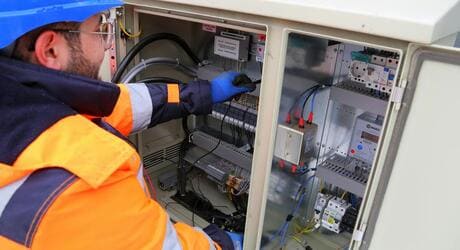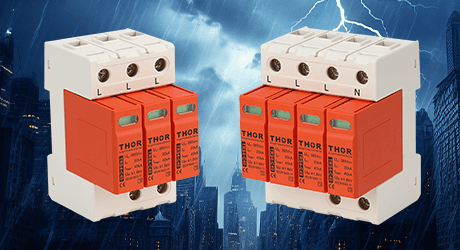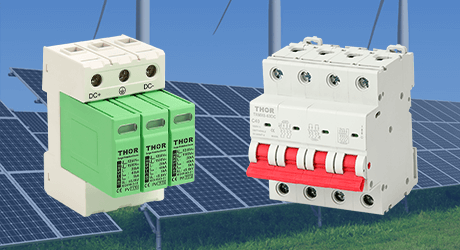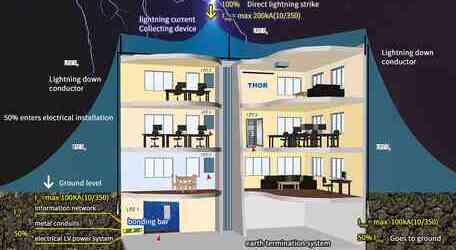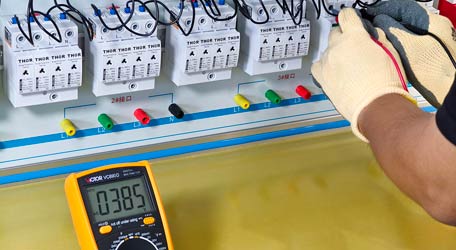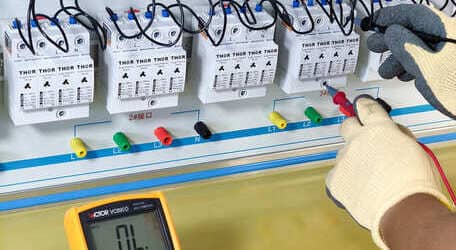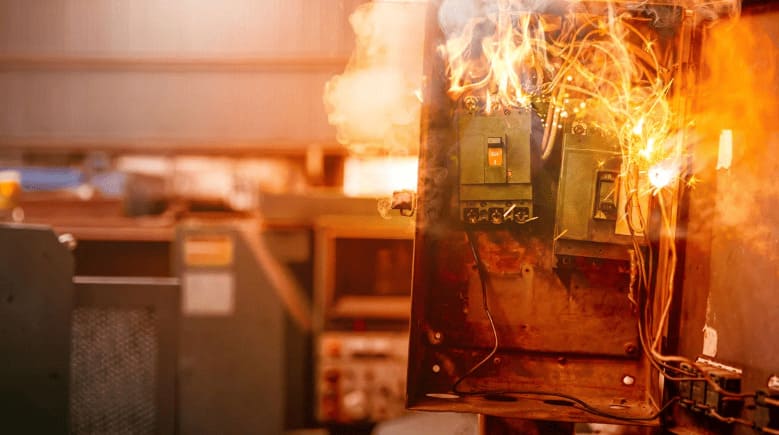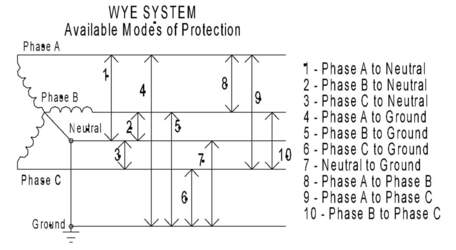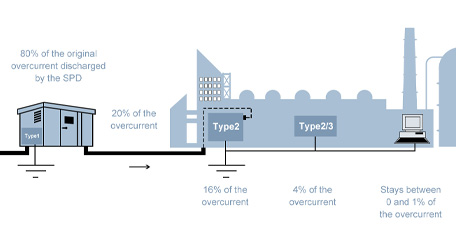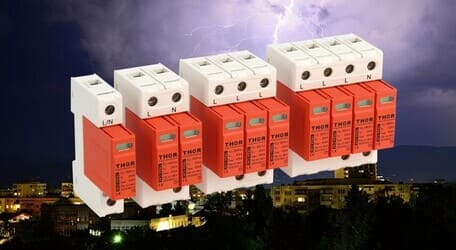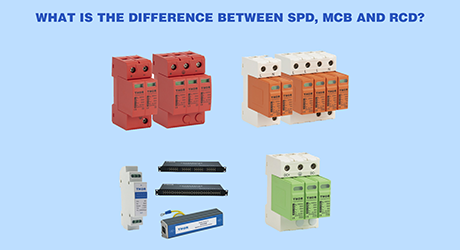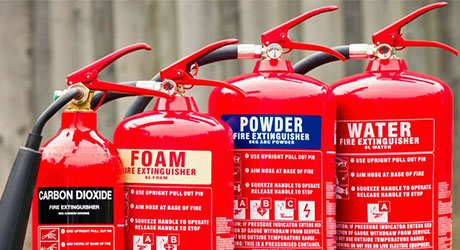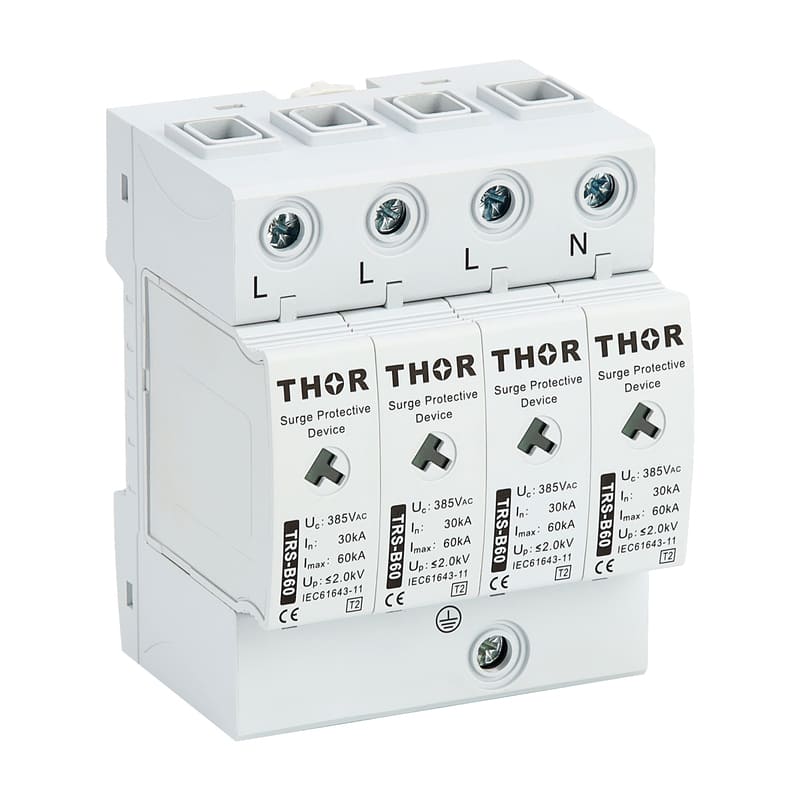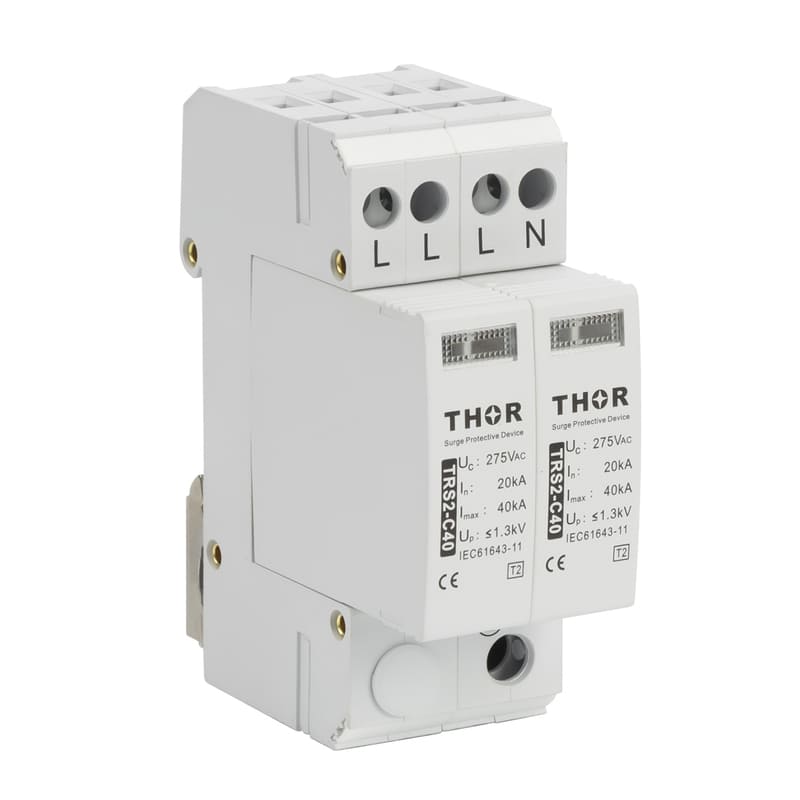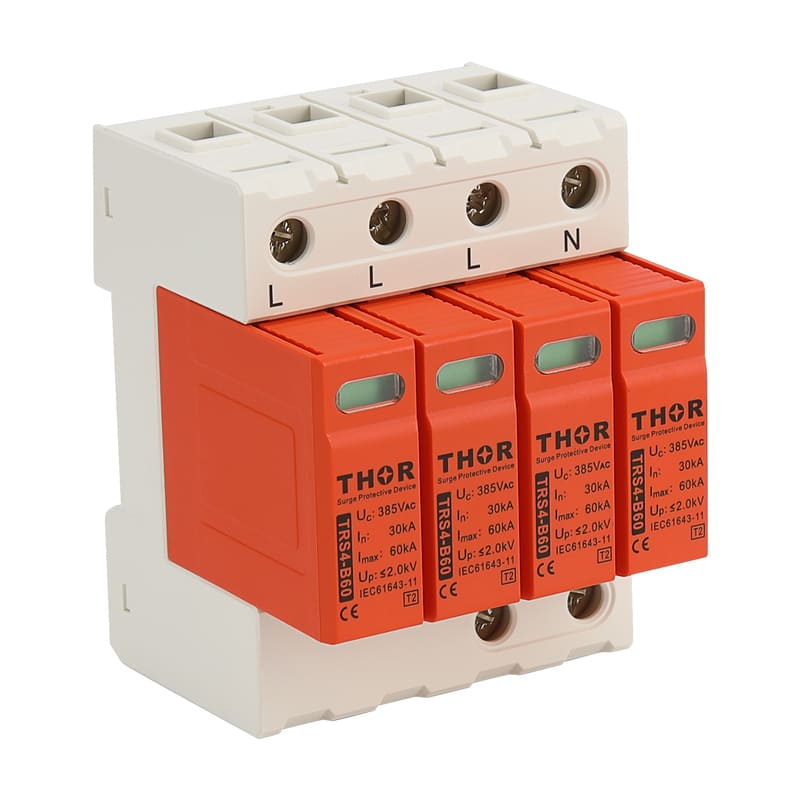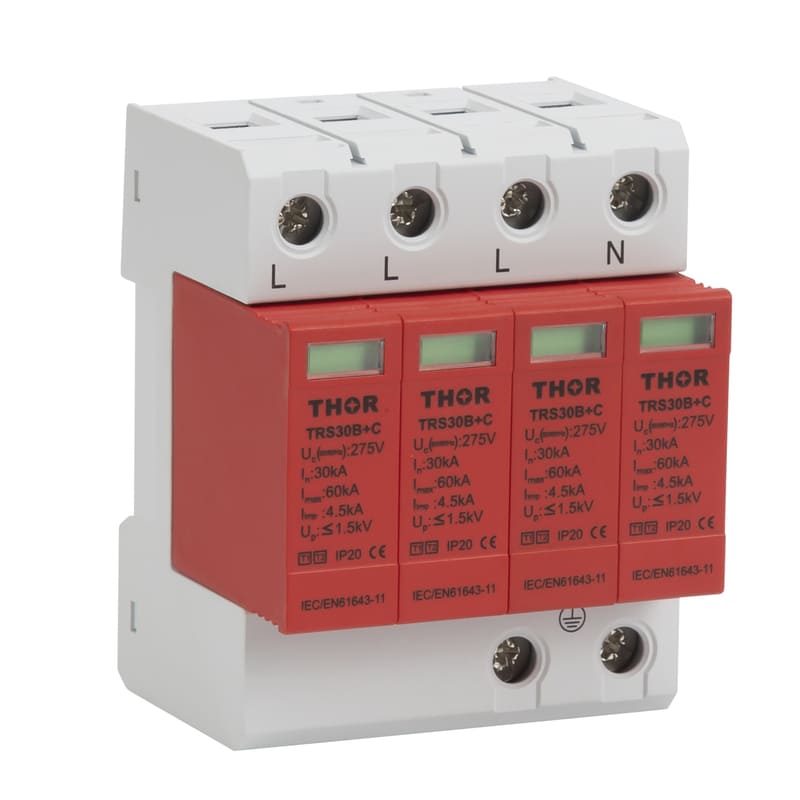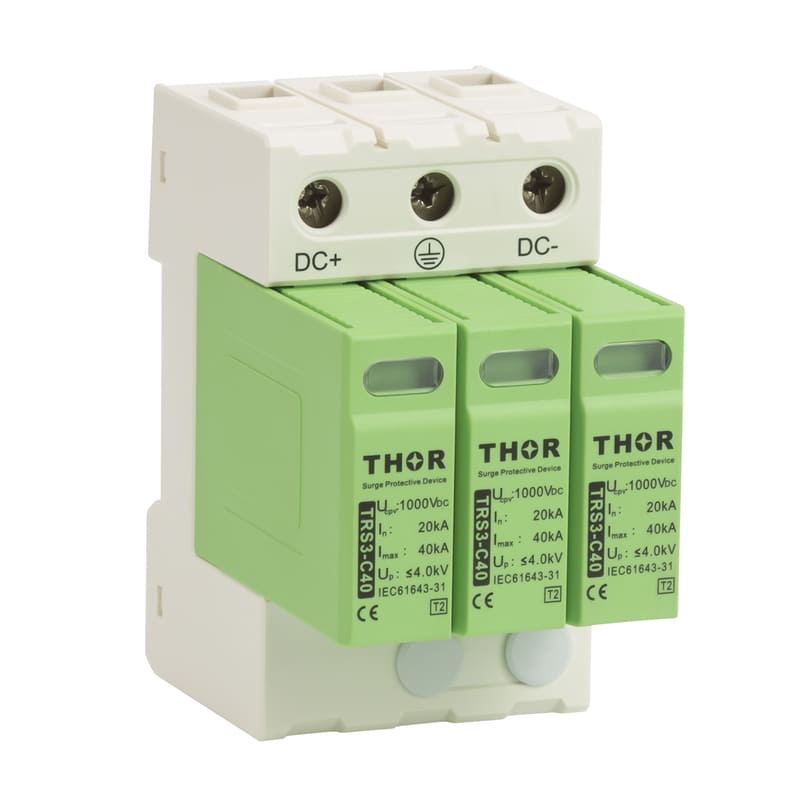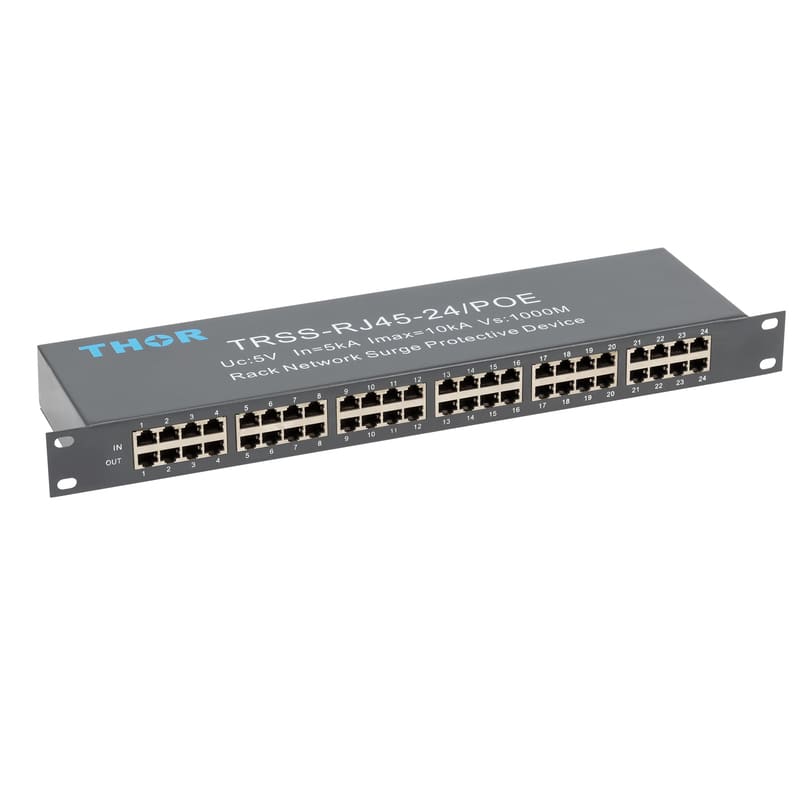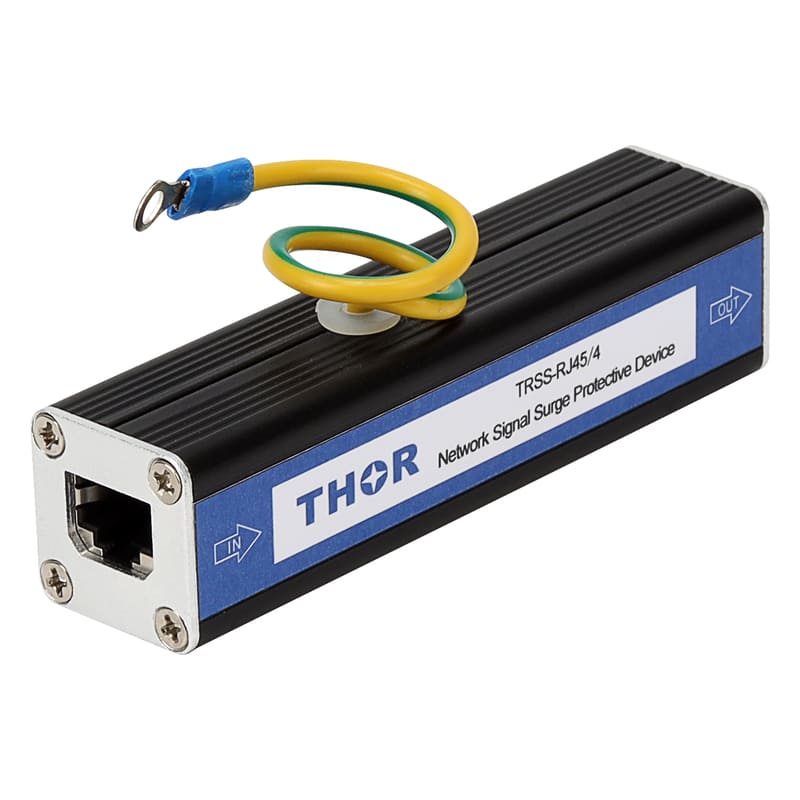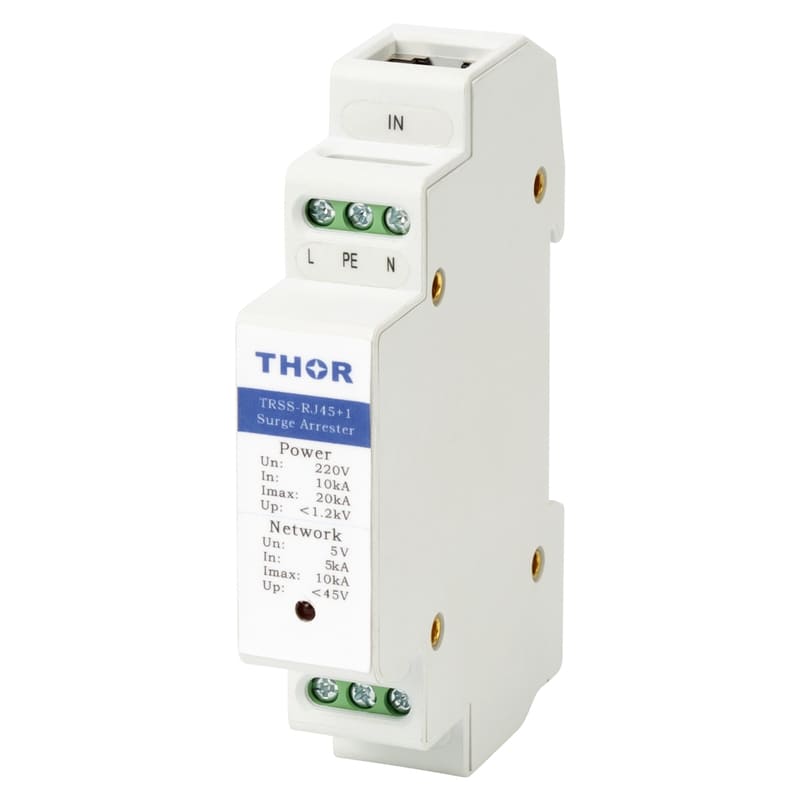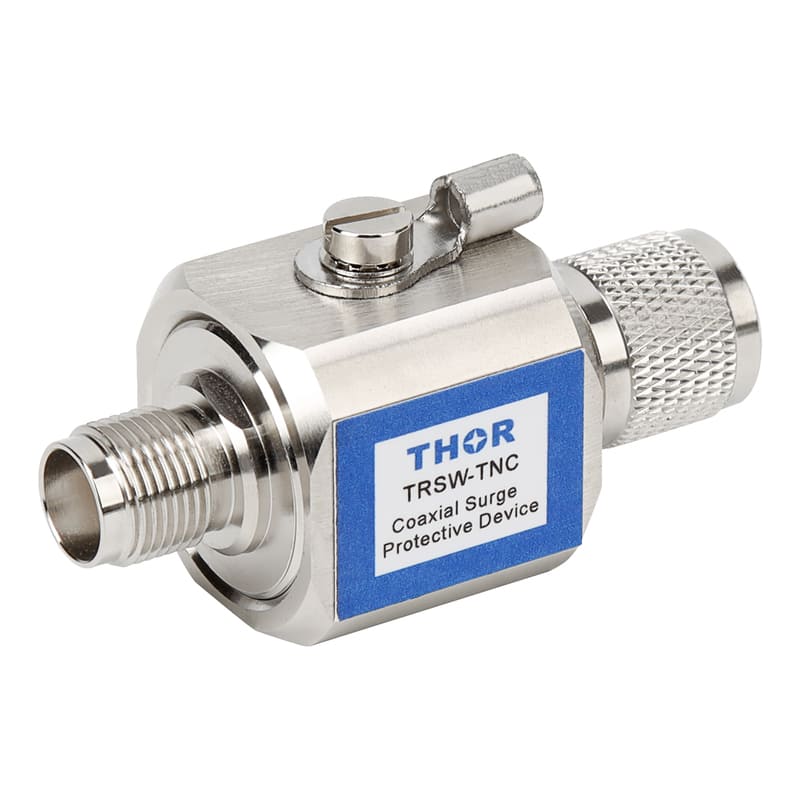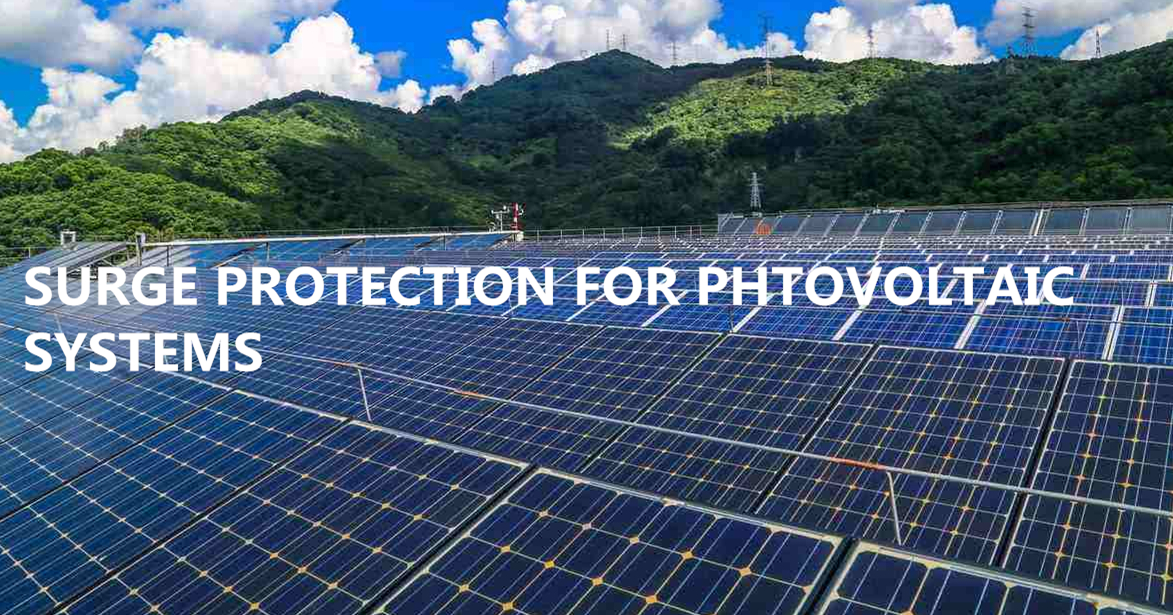
Why do photovoltaic systems need surge protectors?
As solar panels are usually exposed, their related equipment and components will be affected and damaged by lightning events. Therefore, it is very necessary to install a surge protector in the photovoltaic system, which can reduce the impact of lightning events and protect the normal operation of the photovoltaic system.
Lightning is a phenomenon of intense electric discharge between clouds, between clouds and the ground, or between various parts of the cloud body (generally occurring in cumulonimbus clouds).
Usually, storm clouds (cumulonimbus clouds) generate electric charges, the bottom layer is negative electricity, the top layer is positive electricity, and it also generates positive charges on the ground, which moves with the cloud like a shadow. Positive and negative charges attract each other, but air is not a good conductor. The positive charge rushes toward the tops of trees, hills, tall buildings, and even the human body, trying to meet the negatively charged clouds; the branch-like antennae of the negative charge extend downward, reaching closer to the ground. Finally, the positive and negative charges finally overcome the air barrier and connect. A huge electric current surged straight from the ground to the clouds along a conductive airway, producing a bright and eye-catching flash.
The length of a lightning bolt may be only a few hundred meters (the shortest is 100 meters), but it can be as long as several thousand meters. The temperature of lightning ranges from 17,000 degrees Celsius to 28,000 degrees Celsius, which is equal to 3 to 5 times the surface temperature of the sun. The extreme heat of the lightning caused the air along the way to expand violently. The air moves quickly, so it forms waves and makes sounds.
As described by lightning above, lightning is extremely destructive. Photovoltaic systems are completely exposed to a wide outdoor space, and solar panels on display can usually be seen in open spaces such as fields, hills, and the tops of buildings. Therefore, in such a space, when lightning occurs, a large number of charged clouds accumulate in the sky above it and release a large amount of electric charge in the form of lightning. In such a situation, a voltage surge will occur.
The generated voltage surge will cause great interference and catastrophic damage to electrical equipment. The bracket of the solar cell array is made of metal materials and takes up a large space. It is usually placed on the top of a building or in an open place. In case of a lightning strike, it is especially easy to be damaged by a lightning strike. In addition, solar panels and inverters are quite expensive. In order to avoid economic losses caused by lightning strikes, effective lightning protection measures are essential. If someone is present, it will also endanger their lives. Therefore, when installing a photovoltaic system, we recommend that a lightning protection professional electrical engineer provide on-site guidance and install a corresponding and reliable lightning protection system. The basic schematic diagram of photovoltaic system lightning protection is shown below.
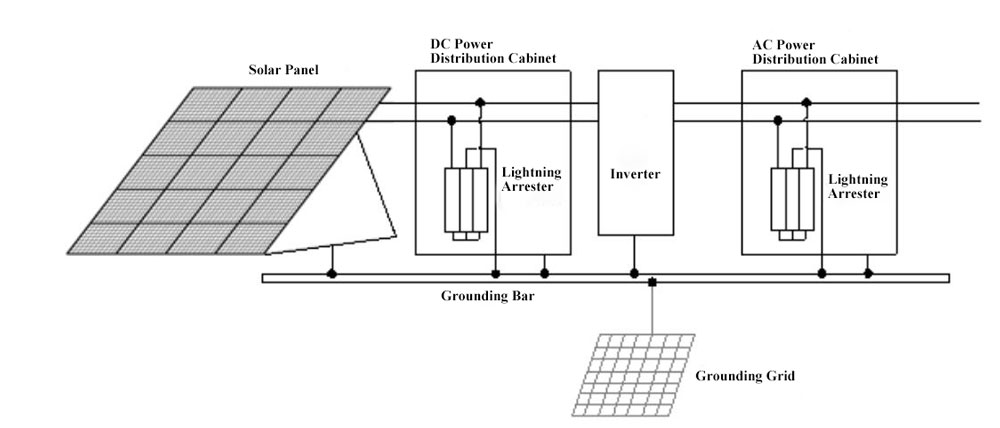
When lightning strikes a solar photovoltaic system, it will produce induced transient currents and voltages in the wire loop of the photovoltaic system. These transient currents and voltages can cause damage to these equipment such as photovoltaic panel inverters, control and communication equipment, and equipment installed in buildings. Therefore, when installing a lightning protection system, there must be a grounding device to discharge to the ground.
What is surge protector?
Surge protector, also called lightning protector, is an electronic device that provides safety protection for various electronic equipment, instruments, and communication lines. When a spike current or voltage is suddenly generated in the electrical circuit or communication circuit due to external interference, the surge protector can conduct and shunt in a very short time, so as to prevent the surge from damaging other equipment in the circuit.
Selection and installation of surge protection devices for photovoltaic systems
Photovoltaic system has unique characteristics, so it is necessary to use SPD specially designed for photovoltaic system. The PV system has a high DC system voltage of up to 1500 volts.
To determine the appropriate SPD module for the photovoltaic system and its installation, you must know:
1.Lightning circular flash density;
2.The operating temperature of the system;
3.System voltage
4.The short-circuit current rating of the system;
5.Waveform level to prevent (indirect or direct lightning strike) ;
6.Nominal discharge current.
When lightning strikes P1 (see Figure 1), the solar photovoltaic panels and inverters are likely to be damaged. If lightning strikes P2 point, it will only damage the inverter. However, inverters are usually the most expensive components in photovoltaic systems, which is why the correct SPD must be selected and installed correctly on the AC and DC lines. The closer the lightning strike is to the inverter, the more severe the inverter will be damaged.
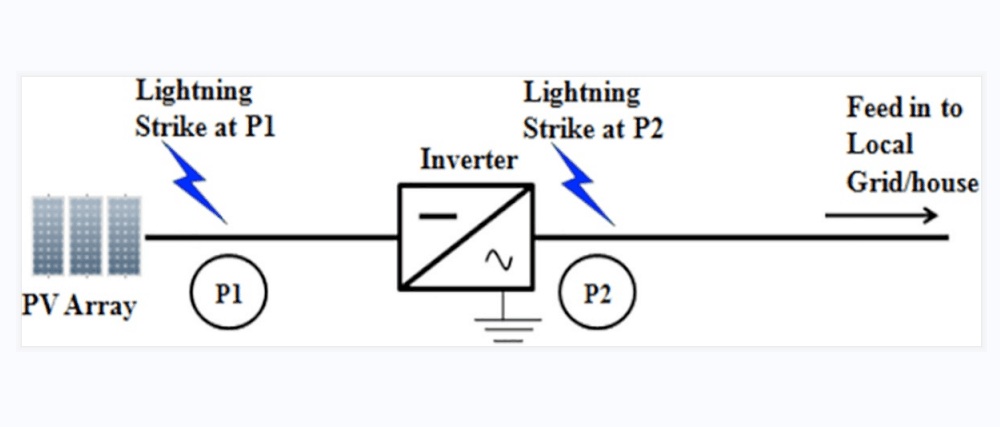
SPD on the DC side
PV power supplies have very different current and voltage characteristics from traditional DC power supplies: they have non-linear characteristics and lead to long-term continuation of the ignition arc. Therefore, the photovoltaic current source not only requires a larger photovoltaic switch and photovoltaic fuse, but also an isolating switch suitable for this unique property and capable of coping with the surge protection device of photovoltaic current. SPDs installed on the DC side must always be designed specifically for DC applications. Using SPD on the wrong AC or DC side is dangerous under fault conditions. When SPDs are used on the DC side, they must also be used on the AC side due to the potential difference.
Surge protection is equally important for the AC side and the DC side. Ensure that the SPD is specifically designed for the AC side.
In order to obtain the best protection, the size of the SPD should be specific to the system. The right choice will guarantee the best protection and the longest service life.
On the AC side, if multiple inverters share the same grid connection, they can be connected to the same SPD.
SPD general installation requirements
The surge protector adopts 35MM standard rail installation
For fixed SPD, the general installation should follow the following steps:
1.Determine the discharge current path
2.Mark the wires that cause the extra voltage drop at the terminal of the equipment.
3.To avoid unnecessary induction loops, the PE conductor of each device should be marked.
4.Establish an equipotential connection between the equipment and the SPD.
5.To carry out multi-level SPD energy coordination.
SPD ground wire diameter selection
Data cable: It is required to be greater than 2.5mm2; when the length exceeds 0.5 meters, it is required to be greater than 4mm2.
Power cord: When the cross-sectional area of the phase line S≤16mm2, the ground wire uses S; when the cross-sectional area of the phase line 16mm2≤S≤35mm2, the ground wire uses 16mm2; when the cross-sectional area of the phase wire S≥35mm2, the ground wire requires S/2.
What can THOR offer?
In recent years, the application fields of surge protectors have become more and more extensive, and the performance requirements of surge protectors have gradually increased. In the field of photovoltaic lightning protection, we are also following the trend. We can not only provide Type 2 lightning protection, but also add Type1+2 lightning protection. Type 1 is Iimp10/350μs waveform, the value can reach 6.25ka. As shown in the picture, we made products specially for this requirement.
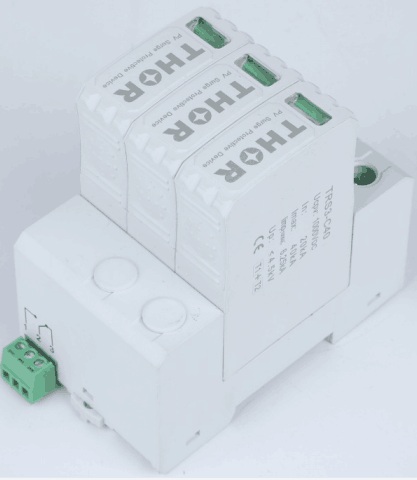
If you wants to know more about our dc surge protector, please view below link:
Type 2 DC surge protector: https://thorspd.com/DC_surge_protector/type2-dc-photovoltaic-surge-protection-device-trs3-series
Type 1+ 2 DC surge protector: https://thorspd.com/DC_surge_protector/type1-2-dc-photovoltaic-surge-protection-device-trs3-series
Inquiry&order email: info@thorspd.com

